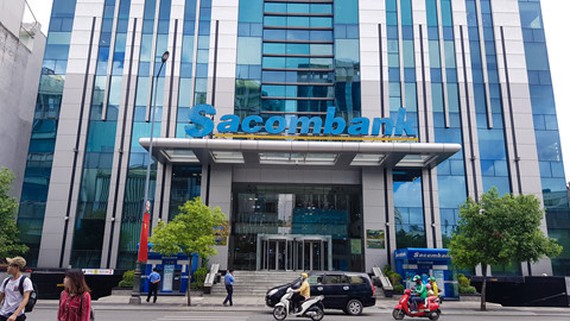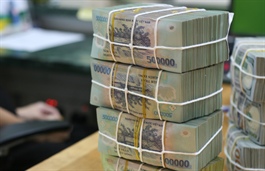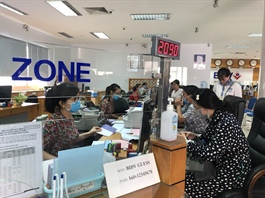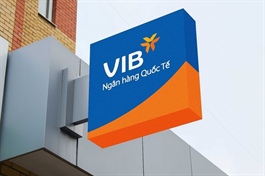Sacombank overwhelmed by bad debts
Sacombank overwhelmed by bad debts
The Saigon Thuong Tin Commercial Joint Stock Bank (Sacombank) was able to somewhat overcome a difficult phase and once again stabilize operations by many restructuring efforts. However, bad debts continue to overwhelm the bank from factors such as a slack real estate market and the unpredictable Covid-19 situation.
Bad debts continue to overwhelm STB.
|
Colossal bad debts
In 2006, Sacombank (STB) became the first bank to be listed on the stock exchange, and in 2015, Sacombank merged with the Phuong Nam Commercial Joint Stock Bank (PNB), with a conversion ratio of 1: 0.75. This was the period when STB began to face difficulties after it took on the burden of bad debts from PNB. By the end of 2015, the non-performing loan (NPL) ratio of STB increased from 1.19% at the beginning of the year to a high 5.85%, and capital losses suddenly increased from VND 980 bn to VND 3,029 bn. Interest and fee receivables also increased sharply from VND 5,000 bn in 2014 to VND 25,000 bn at the end of 2015. At this time, Sacombank had the highest amount of bad debts.
The provision for risks of STB increased dramatically from VND 187 bn in the same period in 2014 to VND 1,125 bn in the last quarter of 2015, equivalent to more than a six-fold increase in provisions. The whole year provisions also increased by two times and this provisioning affected profit seriously. In the fourth quarter of 2015, STB unexpectedly saw a pre-tax loss of VND 738 bn and an after-tax loss of VND 583 bn. The business results of this quarter made STB profit decrease significantly, showing a mere profit of VND 2,140 bn in nine months of 2015.
The risk from the merger with PNB had been anticipated by the Board of Directors. Analysts too had a very negative view on this deal. Specifically, pre-tax profit in 2015 was VND 1,002 bn and after tax was at VND 782 bn. In 2016 pre-tax profit was VND 1,132 bn and after tax was VND 883 bn, while in 2017 pre-tax profit reached VND 1,333 bn and after-tax was VND 1,039 bn. According to a forecast announced by a securities company at the end of 2015, STB may take up to four years to resolve all its bad debts.
Impressive recovery
Immediately after the merger with PNB, the Board of Directors of STB began to restructure and focus on resolving problems and increasing income, capital resources, and improving on safety factors. However, this effort only helped STB maintain asset growth of 13.7% by the end of 2016 while consolidated pre-tax profit was only VND 156 bn. Total liabilities of STB were still low at VND 307,436 bn, although up 14.4% compared to the beginning of the year, while NPL ratio remained high at 6.68%.
In 2017, under the new Chairman of the Board of Directors, Mr. Duong Cong Minh, STB recorded extremely impressive results. Pre-tax profit reached VND 1,492 bn, about 9.6 times higher than in 2016, and total assets were around VND 368,000 bn, up 11% YoY. STB handled VND 19,665 bn of bad debts and outstanding assets in 2017, of which VND 15,365 bn was under the restructuring plan. With this result, the NPL ratio decreased from 6.68% to 4.59% by the end of 2017, and continued to pull down to 2.11% at the end of 2018, and to 1.9% at the end of 2019.
Thus, three years after implementing the restructuring plan, STB recovered and disposed of nearly VND 38,400 bn, recovering at an average of nearly VND 13,000 bn per year. Thereby STB became healthier, reduced a back log burden, reduced on-balance-sheet NPL ratio from 7.25% to only 1.76% by 30 June 2017, and NPL ratio also decreased from 21.38% to only 11.23%.
Unrealistic restructuring
STB total assets increased by 12% per year on an average, and profit-before-tax increased 26% per year. After seeing such remarkable results in 2019, the Board of Directors of STB boldly set targets for the whole period between 2020 until 2025. However, at the 2020 annual shareholders meeting held in early June, the Board of Directors of STB set a target of 20% decrease in profit, to reach VND 2,573 bn, credit growth of 11%, and NPL ratio below 3%. The reduction of profit target by the Board of Directors was understandable in the context of the Covid-19 pandemic, but the NPL ratio being below 3% instead of below 2% surprised many shareholders.
In 2020, STB handled VND 11,000 bn of bad debts, but only in the first five months of the year, with a successful auction sale of assets of around VND 9,700 bn. This only shows that the Board of Directors of STB face two basic operational problems. First, the Board of Directors are not confident enough. Second, the restructuring plan is unrealistic. At the last annual shareholders meeting, Ms. Nguyen Duc Thach Diem, General Director of STB, admitted that the progress in debt collection and settlement was not consistent with the current situation, due to heavy dependence on the real estate market and other legal problems.
Despite handling the NPL remarkably well, the ratio has shown signs of a rebound. According to its half yearly financial report of 2020, at the end of the second quarter, total assets of STB increased by 6.2%, lower than in the same period last year of 8.2%. Debt ratio increased from 1.9% at the end of 2019 to 2.2%; NPL ratio expanded and included Group 2 debt that increased to 2.6%; and NPL coverage was flat at 69%. On-balance-sheet bad debt on 30 June amounted to VND 6,682 bn, an increase of nearly VND 950 bn compared to the beginning of the year, equivalent to an increase of nearly 17%, in which, Group 3 debt increased strongly by 185% to reach VND 851 bn.

























